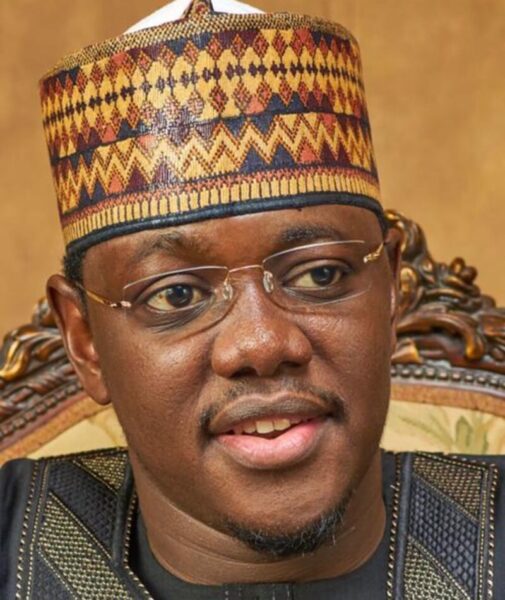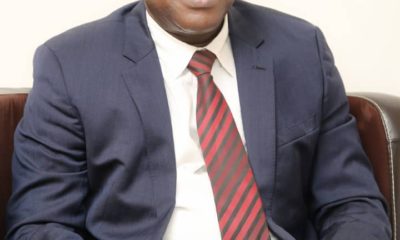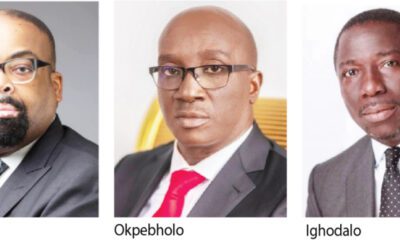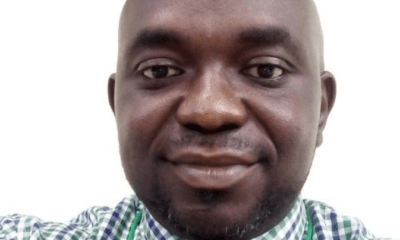Democracy & Governance
My Vision for Jigawa State (VI) -By Mustapha Sule Lamido
Another dangerous issue is the encroachment of River Hadejia’s flood plain. Our land use analysis reveals that most lands between 1 to 20 kilometres from both sides of the river have been either built up or are cultivated. If we are really serious with tackling flood in these areas, we have to advise and inform some communities of this danger.

I wish to start by once again commiserating with families and communities who lost their lives and properties in the course of this year’s raining reason. We pray that Almighty Allah will ease our sufferings and preserve a bigger reward for the victims. Some weeks ago, I announced the suspension of the serial release of my vision in order to respect the flood victims and communities. I believe that all efforts should be channeled towards finding solutions to the menace which we have been doing. I want to salute and commend the efforts of all individuals and organizations that have been working tirelessly to bring succour to those affected.
I am returning with my vision today because I want us to discuss flood solutions even before we have the opportunity of winning the elections. In mid-August, I promised to deploy the services of experts to look into the problem. After more than seven weeks of painstaking research, my technical team have brought forward some tangible insights into the solutions we are seeking for. The solutions are helpful but not by any means exhaustive. What I will be sharing here is a summary, the details will be contained in a report to be made available after all necessary documentations.
What we did was to look at the issue from multiple perspectives; the topography of Jigawa which is a lowland and vulnerable to collection and saturation of flowing waters; the hydrology of the state which is connected to both Kano and Yobe States; the climate which has to do with rainfall amount and intensity over the last 10 years; and the socio-economic activities which involved land use encroachment up to the banks and door steps of rivers and water bodies. Understanding the behaviour of rivers is also key. For example, we had widespread floods across Nigeria in 2002, 2012 and the event is repeating itself in 2022, after 10 years.
In Jigawa, we have three main floods; river, flash and urban. The river flood which is severe is the one that affects communities along River Hadejia starting from Dabi in Ringim where the river enters Jigawa from Kano down to Guri where it exits into Nguru of Yobe State. Local Governments along River Hadejia are Ringim, Taura, Jahun, Miga, Kaugama, Kafin-Hausa, Malam Madori, Hadejia, Auyo, Kirikasanma and Guri. Incidentally, these are the worst hit areas from this year’s flood. Other areas with river flood are along the Dutse-Kiyawa-Birnin-Kudu River system influenced by River Iggi. Elsewhere, we have flash and urban floods scattered across communities of southern Jigawa. These are caused by heavy rainfall, poor environmental planning and bad drainage systems.
Over the years, River Hadejia has been receiving too much volume of water which leads to overflowing of its banks and subsequent submerging of nearby communities. Virtually, all the 26 major rivers in Kano State eventually discharge their waters into River Hadejia. Due to the topography of Kano State, all streams and rivers finally contribute their flows into the Challawa/Wudil river system which eventually discharges into River Hadejia. The Ghari, Marke, Tomas and Dudduru rivers discharge directly into Hadejia. All these waters eventually proceed to Yobe making the state to have even bigger challenges than Jigawa State.
Since Kano has a higher topography and we can’t stop these waters from flowing, the solution to this is to extensively and intensively dredge the Jigawa portions of River Hadejia to increase the depth and width so that it can contain more water and enable free flow without over flooding its banks. Sections where the river bed is shallow and vulnerable to over flooding can be given special consideration. This is a massive project that will require partnership with Yobe State and support from the Federal Government. If given the opportunity, we will explore this option, Insha Allah.
Many people have been suggesting building of dams on River Hadejia. Several experts we engaged have suggested that the geology of North-eastern Jigawa may not support the sort of dam that will contain the waters of River Hadejia. There is a reason perhaps why Audu Bako and Abubakar Rimi of blessed memories did not build much dams in this section of the state. Already the Tiga and Challawa Gorge dam in Kano state have a significant control over River Hadejia.
Northern Jigawa sits mainly on sedimentary formation which may not withstand the massive weight of a mega dam. In Jigawa State, most of our existing dams are built on the basement complex geological structures of Kazaure, Gwaram, Dutse and Birnin-Kudu. However, when we get the opportunity, we will not foreclose any option, we shall re-examine the issue and discuss with all relevant stakeholders like engineers and environmentalists to see if there is a way around this.
From the climate angle, we are able to source and study rainfall and temperature data of Jigawa State for the last 10 years. Our conclusion is that we have received more rainfall and less evaporation over these years than preceding decades. The unusual volume and intensity have also suggested the influence of climate change. The 2011-2020 rainfall range in Jigawa State have been 550 to 800mm per anum which is quite huge for a semi-arid region. Although, we are yet to obtain the 2022 rainfall data, but it is obvious that the amount is significantly higher than the last three years. To address this issue, we shall in collaboration with Nigeran Meteorological Agency (NiMet) and Nigerian Hydrological Services Agency (NIHSA) set up Early warning systems and work with rainfall and flood prediction data to take necessary precautionary measures.
From the socio-economic perspective, we will set up a committee to assess and quantify the level of damage caused by flood over the last 10 years and advise government accordingly. We will Insha Allah strengthen our State Emergency Management Agency (SEMA) and its Local Government units to be well prepared for rescue and relief operations in case flood becomes inevitable. We shall not allow a situation where victims will spend days without being attended to.
Another dangerous issue is the encroachment of River Hadejia’s flood plain. Our land use analysis reveals that most lands between 1 to 20 kilometres from both sides of the river have been either built up or are cultivated. If we are really serious with tackling flood in these areas, we have to advise and inform some communities of this danger. We are going to work with traditional and community stakeholders to demarcate a safety corridor along this flood-prone river.
For urban and flash floods, we will work with communities to repair and clear all drainages and construct new ones where needed. We will set up a task force under the ministry of environment to checkmate blockage of water ways and initiate massive planting of trees to retain excess water. In addition, we shall empower the Jigawa State Ministry of Water Resources to set-up a special hydrological monitoring operation for all rivers and water bodies in the state. If possible, we will employ digital technology like water sensors or flood detection system to achieve it. This will enable us to know when danger is around the corner.
My fellow Jigawa people, we have adequate plans to tackle this flood issue, but it is not going to be easy, neither will it be straight forward. We must acknowledge that it is a problem that all stakeholders must put hands on deck to achieve a better result. While the experts are tasked with planning, the authorities are responsible for implementation, but above all, our people must make community efforts to sustain and protect projects aimed at solving the problem. Sometimes, nature can defy all human efforts, but with these measures, we pray that Almighty Allah will look into our efforts and see us through.
Gobe ta Allah ce
©Santurakin Dutse


















